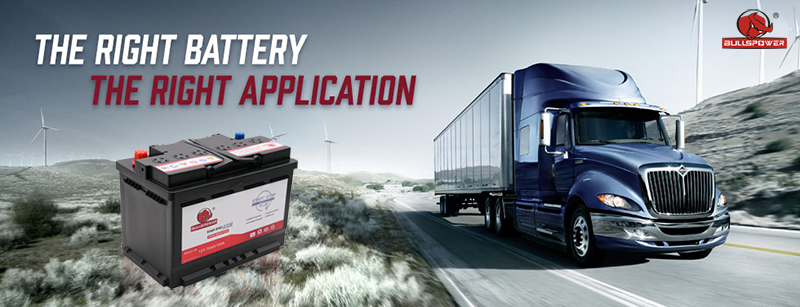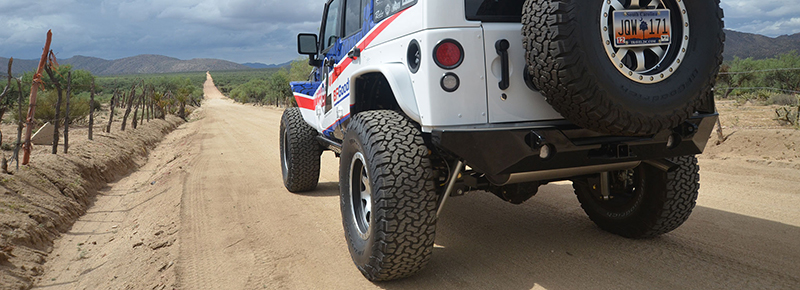|

Your vehicle not starting is a frustrating experience. There are multiple reasons why your car or truck may not start. One of the key culprits, is typically your battery. In the past, we usually had some warning that a battery was getting ready to fail. The truck's engine became sluggish, not turning over fast as it should -- a signal that it was time to start thinking about a new battery. Today, it's common for a battery to seem perfectly normal right up to the minute the engine won't start.
There's never a good time for a battery to die, and once that last volt is cranked we're usually in a hurry to get back on the road (as frugally as possible). And while cost is important, the least expensive battery might not be the best (or cheapest) long-term option. Choosing the "best" battery for your truck is easier when you become familiar with your options before you need a quick replacement.
Buy a Battery with the Correct Dimensions for Your Truck
Batteries come in all shapes and sizes. If you buy one that's too small, it can move around in the battery tray, and the battery hold-down will undoubtedly be loose. If you buy a battery that's too large, it may sit on the edge of the tray, which can rub a hole in the battery (and the hold-down probably won't fit). If the battery is too tall, it could come into contact with the hood or some other piece of metal -- and lead to a loud (and messy) explosion.
Make Sure the Battery Terminals Are in the Proper Configuration for Your Truck
There are numerous battery configurations. If you choose a set-up that differs from your truck's original battery, the cables might not be long enough to reach the terminals. You might coax it on, but vibrations during driving, combined with the cable pulling on the battery post, will eventually break the post loose from the battery case. Never stretch a cable.

Buy a Battery That Meets or Exceeds the Auto Manufacturer's Rating
Each manufacturer determines battery requirements based on a truck's power needs, such as installed accessories, starter demand, charging system and engine size. The manufacturer's rating is the minimum battery rating that you should consider.
Numbers you should know:
● Cold cranking amps (CCA) -- what the battery is capable of producing on that cold morning when you go out and hit the key expecting something to happen. Cold start-ups are among the most difficult challenges for a battery, and if you buy a replacement with a lower rating than your truck requires, you may be stranded (buying a battery with a higher rating won't hurt, but there's no real advantage to a large increase).
● Batteries are marked with numbers that disclose dimensions and post location, such as group 24, group 24F, group 56, etc. If you see that type of designation on your original battery, write it down and give it to the person who's helping you find a replacement (the parts department should have a reference guide if you can't find the number either on your old battery or in your owner's manual).
Battery Choices
Batteries with acid must be vented, because they work using a chemical reaction that produces heat, vapor and expansion -- if they are not vented, they explode.
● Older style auto batteries had individual caps with vent holes.
● Later batteries had two longer caps, each designed with individual caps to cover three battery holes, and a dual-stage venting system that allowed vapor to exit.
● Drivers sometimes think that today's maintenance free batteries are sealed because they are made with caps that can't be removed. They do vent but are designed so that much of the moisture in the vapors become trapped and goes back into the cells.
A conventional battery is a good choice for the average driver. If you go off-roading, you might want to consider a GEL type battery -- its thick fluids aren't as likely to drip out of vents during climbs and hefty bumps. If you have a street rod or hot rod, check out batteries that are designed for small spaces or can even be mounted on their sides.
Changing the Battery Yourself
Conventional batteries are filled with a mix of acid and water. Take these precautions:
● If you get the liquid on your skin, wash it off immediately with soap and water.
● If you get it in your eyes, flush your eyes with water and head to the doctor's office.
● If you get the fluid on your clothing, try rinsing it out right away, but don't be surprised if the spot deteriorates and the hole becomes larger each time your shirt or pants are laundered.
Always Disconnect the Negative Battery Cable First and Reconnect It Last
● If you loosen the positive cable clamp while the negative cable is still connected, and your wrench touches something metal on the truck, it will spark, resulting in burns, damage to tools or even a battery explosion. If you don't know which is the negative cable, let someone else do the work.
Dispose of the old battery properly. Put the battery in something plastic that won't
leak and secure it so it won't fall over or slide around. Drop it off at the store where you purchased the new battery.
Remember to reset the clock and radio stations when you are finished replacing the battery. If a battery is totally dead, the settings will have cleared, but if there's a little juice left, they may be intact.
● If you get everything ready before you begin the switch, you can sometimes make the change quickly enough that the radio retains its station settings.
● In most vehicles, if the battery is only disconnected for a minute or two, the computers will not generate a battery code. If a code does appear, you might need to have it cleared at a shop or parts store.
● The computers in most new vehicles go through a learning process that adapts to the way you drive. If the battery is disconnected for awhile, the computer might revert to its default settings. This is something you might not even notice, but if it happens, all you have to do is drive normally and the computer will re-adapt to your driving style.
If you have any doubts about changing a battery yourself, turn the job over to someone who's accustomed to making the switch.
Special Warning: Batteries contain sulfuric acid that can severely burn your skin and could blind you. If you find yourself with a dead battery, carefully inspect it before you jump start it. If the case is bulging, cracked or leaking, do not jump start it. Damaged batteries can explode or catch fire. Deeply discharged batteries can freeze. Do not jump start a frozen battery. Call Wisdom Power Immediately and we can assist you with getting your car or truck battery fixed properly, safely and disposed of in a proper environmentally friendly way.
|















